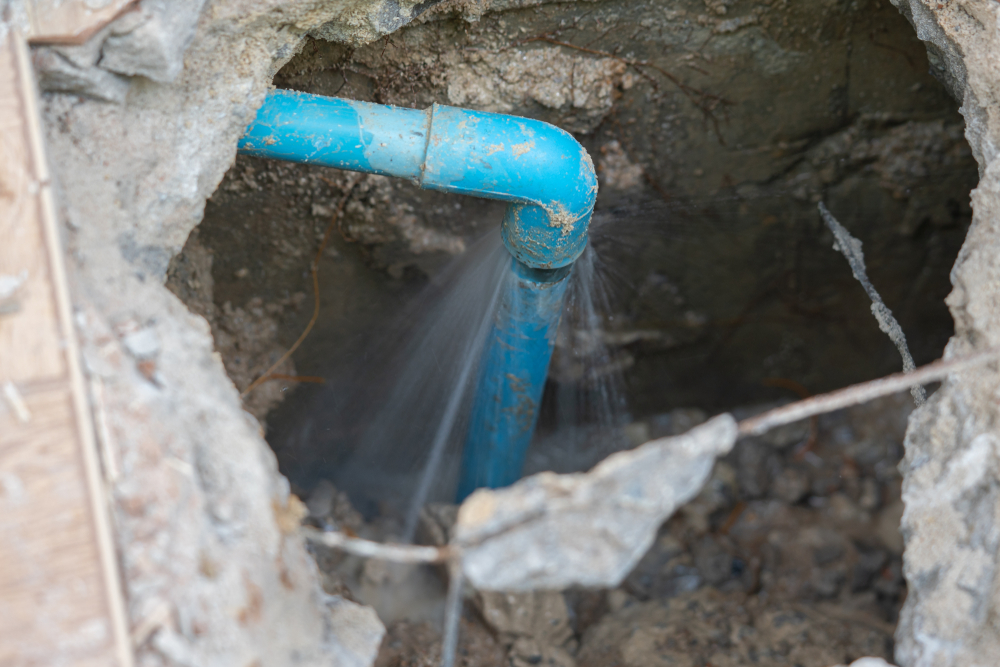Guide To Water Leakage Discovery In Your Home
Guide To Water Leakage Discovery In Your Home
Blog Article
This great article below relating to Detecting hidden plumbing leaks is totally entertaining. Give it a go and draw your own findings.

Early detection of dripping water lines can alleviate a prospective disaster. Some tiny water leakages might not be visible.
1. Take A Look At the Water Meter
Checking it is a proven way that assists you find leakages. If it moves, that indicates a fast-moving leak. This suggests you may have a slow leak that could also be underground.
2. Check Water Consumption
Assess your water expenses as well as track your water intake. As the one paying it, you should see if there are any kind of discrepancies. If you identify sudden changes, despite your usage being the same, it suggests that you have leaks in your plumbing system. Remember, your water bill ought to drop under the very same array on a monthly basis. A sudden spike in your expense indicates a fast-moving leak.
A stable increase every month, even with the exact same practices, shows you have a sluggish leak that's likewise slowly intensifying. Call a plumber to thoroughly inspect your residential property, particularly if you really feel a cozy location on your floor with piping underneath.
3. Do a Food Coloring Test
When it involves water usage, 30% originates from toilets. Test to see if they are running effectively. Decline specks of food shade in the storage tank and also wait 10 mins. There's a leak in between the storage tank as well as bowl if the color somehow infiltrates your dish throughout that time without flushing.
4. Asses Outside Lines
Do not fail to remember to examine your outside water lines too. Must water permeate out of the link, you have a loose rubber gasket. One tiny leakage can squander loads of water and also increase your water expense.
5. Evaluate and also Evaluate the Scenario
Property owners must make it a practice to inspect under the sink counters and also also inside cupboards for any type of bad odor or mold development. These two warnings indicate a leakage so punctual focus is required. Doing regular assessments, also bi-annually, can save you from a major problem.
Much more importantly, if you recognize your house is currently old, keep a watchful eye on your heating systems, hose pipes, pipelines etc. Look for stainings and compromising as many appliances and pipes have a life expectancy. They will likewise naturally deteriorate as a result of tear and wear. If you believe leaking water lines in your plumbing system, don't wait on it to rise. Call an expert plumber as soon as possible so you do not end up with a horrible mess in your house.
Early detection of dripping water lines can reduce a potential disaster. Some small water leaks might not be noticeable. Inspecting it is a proven means that helps you find leaks. One small leak can throw away lots of water and also increase your water costs.
If you presume leaking water lines in your plumbing system, don't wait for it to escalate.
WARNING SIGNS OF WATER LEAKAGE BEHIND THE WALL
PERSISTENT MUSTY ODORS
As water slowly drips from a leaky pipe inside the wall, flooring and sheetrock stay damp and develop an odor similar to wet cardboard. It generates a musty smell that can help you find hidden leaks.
MOLD IN UNUSUAL AREAS
Mold usually grows in wet areas like kitchens, baths and laundry rooms. If you spot the stuff on walls or baseboards in other rooms of the house, it’s a good indicator of undetected water leaks.
STAINS THAT GROW
When mold thrives around a leaky pipe, it sometimes takes hold on the inside surface of the affected wall. A growing stain on otherwise clean sheetrock is often your sign of a hidden plumbing problem.
PEELING OR BUBBLING WALLPAPER / PAINT
This clue is easy to miss in rooms that don’t get much use. When you see wallpaper separating along seams or paint bubbling or flaking off the wall, blame sheetrock that stays wet because of an undetected leak.
BUCKLED CEILINGS AND STAINED FLOORS
If ceilings or floors in bathrooms, kitchens or laundry areas develop structural problems, don’t rule out constant damp inside the walls. Wet sheetrock can affect adjacent framing, flooring and ceilings.
https://www.servicemasterbyzaba.com/blog/how-to-detect-water-leakage-in-walls/

Do you really like more info about Top leak detection hacks? Place a remark directly below. We will be glad to listen to your reactions about this content. We are looking forward that you visit us again in the future. Do you know anybody else who is looking into the topic? Feel free to promote it. Thanks a lot for taking the time to read it.
Report this page